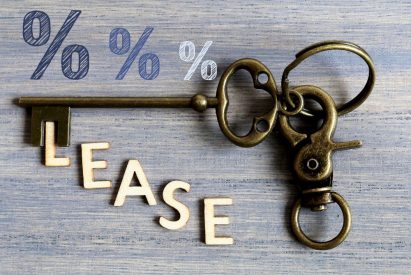“We are implementing IFRS 16 Leases. We have a lot of operating leases for which we need to calculate right-of-use asset.
And, we need to determine the right discount rate.
We simply calculated the internal rate of return of our cash flows from operating leases and this is our interest rate implicit in the lease, but auditors told us it was not OK.
So, we wanted to use the incremental borrowing rate. Currently, we have medium-term loan for about 3% p.a., but our auditors are not happy either.
Please, how to determine the appropriate discount rate for our leases?”
Answer: IRR vs Incremental Borrowing Rate
This is a very broad question, but please let me give you a few hints and explain why your auditor was not happy with your discount rates – at least, that’s what I think why.
Discount rates under IFRS 16 Leases
The standard IFRS 16 says that the lessee should discount the lease payments using:
- The interest rate implicit in the lease, or
- The lessee’s incremental borrowing rate if the interest rate implicit in the lease cannot be determined.
Let me shortly break this down.
Interest rate implicit in the lease
Interest rate implicit in the lease is very hard to determine for all the lessees.
The reason is that this rate is specific for the lessor, not for the lessee.
Why?
IFRS 16 defines the rate implicit in the lease as the discount rate at which:
- the sum of the present value of the lease payments and unguaranteed residual value equals to
- the sum of the fair value of the underlying asset and any initial direct costs of the lessor.
Therefore if you are a lessee, you should find out the unguaranteed residual value and the lessor’s initial direct cost.
The trouble is that not many lessors would tell you this information as they might consider it confidential and sensitive.
This is the reason why most lessees will simply use the incremental borrowing rate.
I believe that auditors from this question were right when they refused the internal rate of return of the lease as the interest rate implicit in the lease, because it was the rate of the lessee, not the lessor.
Incremental borrowing rate
IFRS says that the incremental borrowing rate is the rate of interest that a lessee would have to pay to borrow the funds to obtain:
- An asset of a similar value to the underlying asset,
- Over a similar term,
- With a similar security,
- In a similar economic environment.
This definition implies that the incremental borrowing rate is not only a specific for the lessee, but also for the underlying asset and that’s the reason why you cannot use the same incremental borrowing rate for all of your leases.
Let me give a few illustrations:
- Imagine you want to lease the valuable land in a high-level area – that’s really a great value collateral and it affects your incremental borrowing rate.
But, if you would like to lease a car, that’s not so valuable collateral as the land.In other words, the security is not the same and you would need to apply different incremental borrowing rate when leasing a car and when leasing a land.
- Imagine you want to lease a land for 1 mil. CU and a car for 20 000 CU – not the same level of risk for the bank as not the same amount of funds necessary to borrow.
- Imagine your car leases are for 3 years, but the office lease is for 10 years. I am quite sure that the interest rate offered by the bank for 3-year loans would be different from the rate offered for 10-year loans.
- Imagine you want to lease an office space in the capital city center and a warehouse in a cheap area of your country. Again, not the same value, strength and environment.
- Imagine you entered one lease on 1 January 2017 and the second one is planned on 1 January 2019 – not the same economic environment, since it is 2 years apart, and you must take all the changes into account.
Again, auditors were right when they refused to accept the same incremental borrowing rate for all the leases that you have.
How to determine the incremental borrowing rate
There are 2 basic steps:
- Take some observable rate.
Observable rates can be for example the rate on your past similar borrowings, or the actual offers from your bank for the loans with similar amount, security and term.
Or, if you are renting the property, then the property yields could be a great start.
- Make adjustments.
Adjustment might be needed exactly because your observable rates might not precisely reflect the lease.
For example, when you take the rates for unsecured loans, then you need to adjust the rates for the collateral – which is your underlying asset.
Or, maybe you took the rates offered to companies with low credit risk, but your credit profile is worse – then you need to adjust.
Finally, let me point out the materiality.
It can happen that you have just a few leases and thus the impact of these adjustments to observable rates would not be material.
In this case, just take the observable rates and don’t bother with adjustments – they would be costly, judgmental and immaterial. But, you need to make absolutely sure that you are below your materiality level.
Any comments or questions? Please write me below – thank you!
